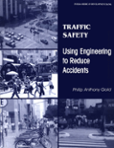Traffic Safety: Using Engineering to Reduce Accidents
Date
Jan 1999
EDITOR
Wright, Charles Leslie
The book gives traffic engineers, planners, and managers a methodology to identify, analyze, and correct factors that cause traffic accidents. The procedures and materials required are of low cost and simple installation, accessible to most entities that administer traffic systems. The book focuses on critical spots on urban roads. The methods and solutions are equally useful for reducing accidents elsewhere on urban roads and on interurban highways and rural roads. This book is based on work contracted in 1987 by the Institute for Applied Economic Research (IPEA) of Brazil. During the last 12 years, the author has used the material in numerous traffic safety training courses and has used this unique opportunity to test, revise, and update the contents, resulting in the current volume. The manual has both practical and didactic characteristics. It presents the elements of road design, signs, signals, and markings (or their absence) and the behaviour of drivers and pedestrians that, separately or in combination, cause accidents. This diagnosis is followed by an examination of corrective traffic engineering to reduce accidents, along with ways to monitor the results. The book complements existing norms by showing how traffic engineering techniques may be more widely and correctly utilised. A previous version of the book was awarded the Volvo Traffic Safety Prize in 1993.
Generative AI enabled





